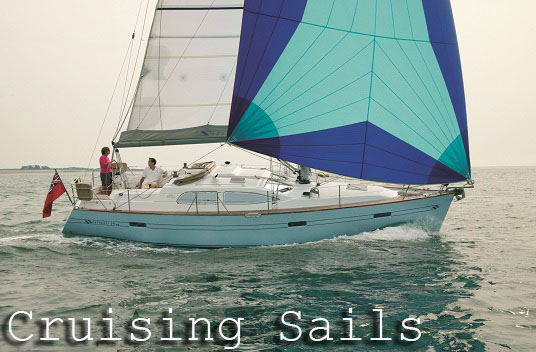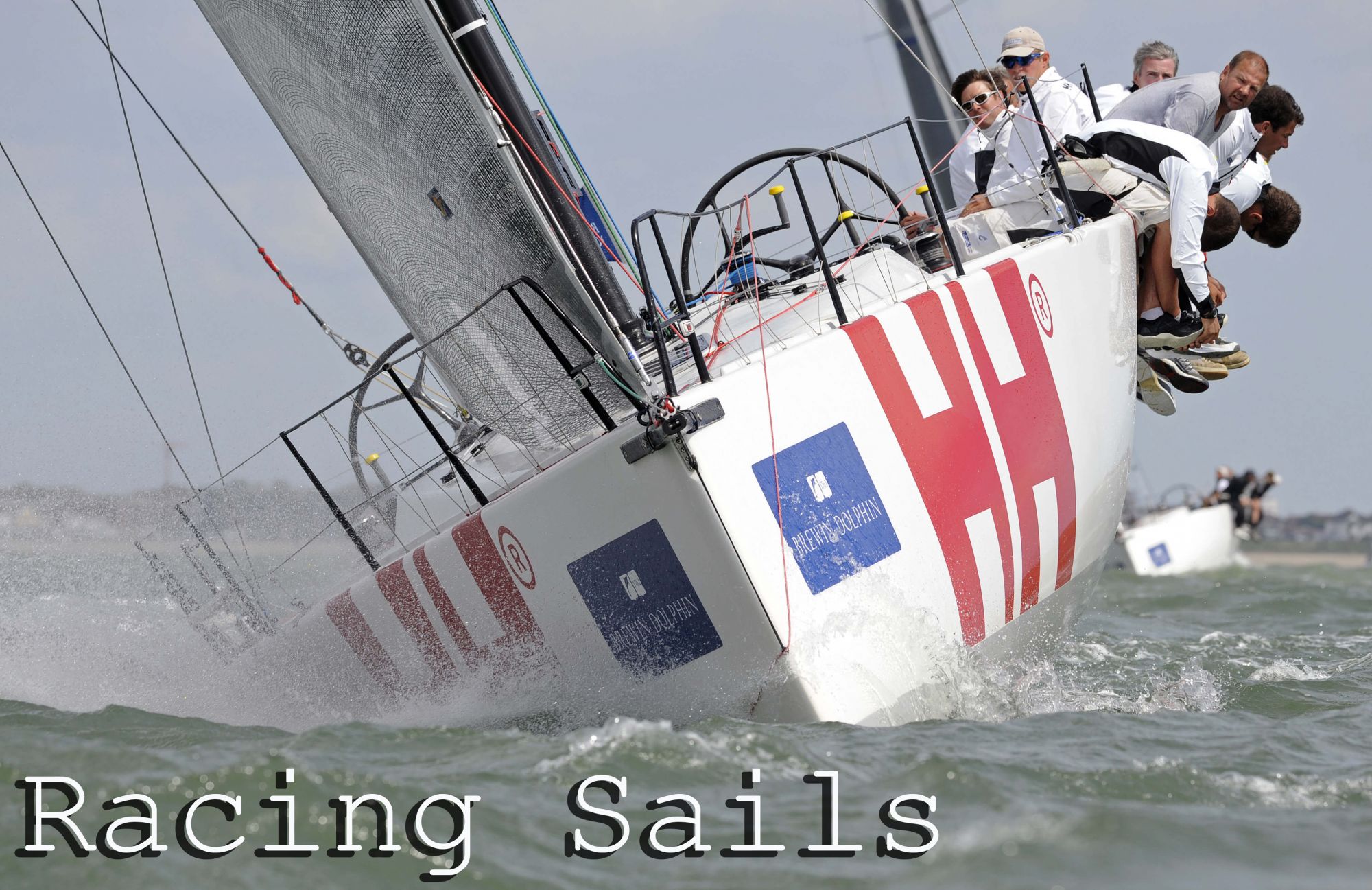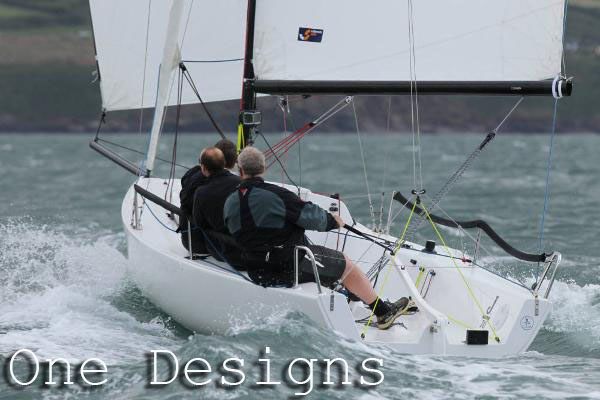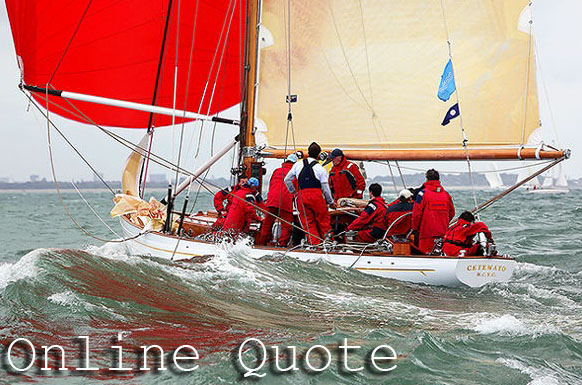6th March 2023« All News Items
In the Mind of the Main trimmer
So you want to be the Mainsail trimmer
Sailing is an incredibly complicated sport with a huge number of variables but when it gets to race day we want to simplify our thought processes so we can make good decisions. This applies equally to our trimming or steering decisions as it does to tactics and strategy.
When it comes to your upwind speed the most important person on board is your main trimmer. Sure, it’s a team sport; the helm must get you off the start line, putting you in clear air and steer perfectly through the waves; the crew must hike as hard as they can and the jib/genoa trimmer must set their sail correctly but the biggest difference is made by the main trimmer.
There are so many variables in setting up the mainsail and it must be able to work efficiently from 5-25 knots of breeze. How do you prioritise which control to adjust and when? After all you only have one pair of hands! When trimming the main ask yourself one very simple question.
Are we Overpowered or Underpowered?
Every yacht will have a design wind speed where the sails are trimmed to generate the maximum power, the helm has the perfect balance, the heel angle is just right and the crew is fully hiked. This could be anywhere from 7 to 15 knots depending on the design of your yacht. We can refer to this very specific condition as maximum power.
It is better to think about maximum power in terms of heel angle rather than the wind speed on your instruments as this helps to factor in wind gradient, the rate at which wind speed varies with altitude. By talking to your helmsman and finding the heel angle he can handle before excessive weather helm sets in you will be able to identify when you are at maximum power.
Trimming for Maximum Power
The boom will be on the centre line and the aft end of the top batten parallel to it. Aim to stall the top tell tale between 50 and 70% of the time but make sure the next one down never stalls.
The backstay will be on 25% to remove a little depth in the top of the main but your forestay tension is being generated largely by mainsheet tension. You are ideally still looking for some slight creasing
out of the luff of the main which indicates the correct amount of mast bend
and will have no Cunningham or vang on. If the water is particularly choppy then you could find that easing the outhaul a little is fast.
The boat should be perfectly balanced on the helm with just a little weather helm causing a very gentle round up if let go by the helmsman. This is the amount of helm you are looking to achieve at all times. Look at the angle of the tiller or put a tape mark on your wheel.
In some boats you may have a rudder angle sensor and target rudder angles for varying wind strengths. Don’t overwhelm yourself with information though to start with. Work with your navigator over the season to record when you are fast and when you are not so fast. The same can be done for heel angles if you have the ability to record these.
A good guide is always for a small and constant amount of weather helm and to keep heel angle constant. This will make your foils work most effectively through the water.
You will be on your base rig setting at this point. The caps set to control the forestay if the mainsheet is eased. This can be determined by looking at the leeward shroud when sailing up wind. It should just be snug, very occasionally going slack as the boat hits a larger wave. You should talk to your jib trimmer as they will have a good feel for the forestay sag and you can work together to develop the settings.
The diagonals are set to give an even distribution of depth up the main, tight enough to create some depth and prevent excessive bend if the backstay is tensioned to around 35% but slack enough that the main won’t get too deep and stall at 15% backstay. In most boats the mast should be straight sideways at this point.
Once you are happy with your max power set up it’s a good idea to calibrate everything so that it’s repeatable and there is a reference as you trim up and down the wind range.
Rig tuning is just trimming for your mast and is worth spending time getting right as it forms the basis for any rig adjustments you make up and down the wind range. You might be able to find this information in a tuning guide if there is one available for your class; or talk to your sail maker who will be able to give you some fast settings.
A well set up rig will make it much easier to sail through the wind range and rather than fighting the boat the main trimmer will only need to make small adjustments to maintain top speed. The final 10% of speed will not be available to you with a poorly set up rig so it is worth spending the time to make sure it is right.

Underpowered
Your primary focus in the light is to keep the wind flowing over the sail. The top tell tale is your best guide for this. The aim is to always have it flying in the very lightest conditions and progressively increasing the stall until you reach 50-70% at maximum power.
As the wind drops the main leech will close and the forestay will tighten, de-powering the jib. Because we spent time setting the rig up well all we need to do is give the mainsheet a little ease. The top of the main will open back up to the batten parallel to the boom position and the jib will get a little deeper.
If the pressure stays light you can give the traveller a little pull to bring the boom back to centreline and if it builds back to ‘maximum power’ we can give the mainsheet a small trim back to our mark.
If the forestay gets too tight you will be able to ease the backstay to around 15% although remember that this will close the main leech and require a little sheet ease. Each trim change you make will have a primary effect which you are looking for but also secondary implications. It is important to consider these as they might not always work in your favour.
Once you need to soften the forestay more than this it’s time to go down a rig setting so that your usable backstay range will become 5-20%. The same rules on traveller, mainsheet and backstay will still apply as you are still in the underpowered range. In really light conditions sub 5kts you can ease the mainsheet a little more, causing the top batten to open around 5 degrees relative to the boom.
Overpowered
As the wind builds from maximum power the main leech will open and the forestay will sag more. A little snug on the backstay will bring the forestay back in check and open the main leech helping the boat to accelerate. If the pressure remains, then the main can be snugged a little amount to bring the batten back parallel with the boom. You can pull the outhaul to the band but make sure to give it a little ease if the wind drops.
As the pressure continues to build you can alternate dropping the traveller and increasing backstay tension. Keep monitoring the top batten and keep it parallel with the mainsheet. It will become impossible to make the top tell tale stall without overloading the helm. You are now trimming to keep the heel and rudder angle in check and this should be your main focus. 
By the time the traveller gets down to the centre line the backstay will be at around 35%. The mainsail will be starting to get a little flat which indicates it’s time to go up to the next setting where you will have a useful range of 30-60% on the backstay. At this point you should also snug the Cunningham but only to remove creases in the lower luff.
At some stage in the cycle of increasing backstay and dropping the traveller you will find that the main will start to backwind. At this point you need to start increasing mainsail twist so that the boom can be kept inside the quarter. In other words, the top batten can be more open than the boom angle. This will keep the mainsail working rather than flapping. The jib trimmer will can help keep the main working so communicate with them to keep both sails working.
Eventually you will have worked up through the settings so you can apply 75-100% of backstay and the top batten could be up to 15 degrees open from the boom angle, which will still be inside the quarter. The Cunningham is still just snugged to remove creasing and hold the draft in the required position.
Once the traveller gets below the centre line the vang can be progressively tensioned to help control the mid leech and really flatten the bottom third of the main.
Once you are overpowered the windward tell tales on the jib will always be lifting. Don’t worry about them and focus on heel angle and your speed relative to your competition. If you want to go higher increase the power and if you want to go faster, depower more to control heel angle. Keep in mind the helm angle as you do this and still aim for the target amount of weather helm.
Calibrate, Record and Learn
By having clear targets for what you are trying to achieve in terms of forestay tension, mainsail depth and twist. You will be able to make the right adjustments and communicate them to your helmsman, jib trimmer and possibly runners.
Record everything you learn about your boats rig and trim settings. This way it will be possible to recreate the setup quickly for any conditions. You will also be able to share this information if you can’t make the race one weekend.
What were you doing differently last regatta which made you fast? Check the notes you have made and find out.
The Primary Control
By taking notes you will be able to create yourself a trim matrix showing which controls you want to adjust for any mode change across the wind range. This represents the ideal setting for each sail control in any wind speed.
In reality you may have to compromise on this depending on the type of boat you are in or the conditions.
For example, in very harsh gusty conditions you may have to use the control which will do the most, the quickest where as in steady conditions you can focus on fine adjustments indicated by your trim matrix.
Sometimes the backstay is not easily adjusted. It could be a hydraulic ram on the centre line behind the helm or be a runner led to a winch, permanently manned by a crew member. Which setup you have will clearly influence how aggressively you can play the backstay.
The traveller might be the control you would like to use in an ideal world but it could be far too heavy to play meaning you need to keep the boat on its feet by playing the mainsheet. The traveller would then only be used for mode changes.
You might find your specific boat sails best with the traveller high up the track with a softer mainsheet or using a lot of vang to control the leech. You might also find the opposite. The key is to experiment or to see what the fastest people in your fleet seem to be doing and then to record it for the next time.
Whatever you find out about your specific boat there are two things that will definitely hold true. The fastest way to sail will be with a constant angle of heel and weather helm. Focus on this before all else and your trimming will automatically improve.
Good luck to all the trimmers out there and enjoy the up and coming 2017 season. If you ever need some advice or learnt something you just have to share with everyone drop us a line. sails@ultimatesails.co.uk See you on the water in 2017.










